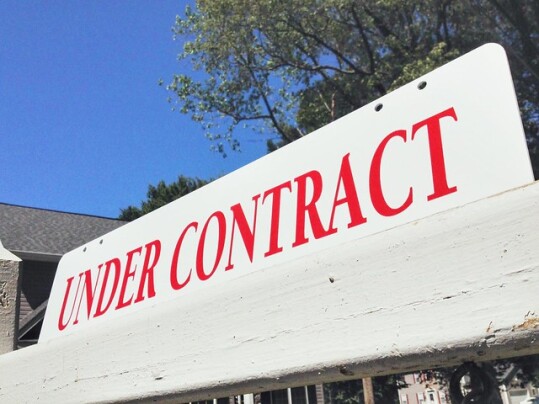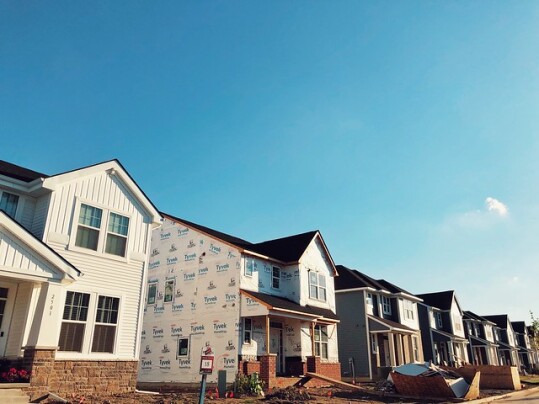When a contract to buy a home is signed, that home’s sale is considered pending until it eventually closes weeks later. During this period, the details of the sale and financing are finalized. The lag between signings and closings makes pending sales an excellent predictor of future home sales. That’s why the National Association of Realtors tracks them each month. According to their most recent report, pending home sales increased 8.1 percent in January. It was the second consecutive increase and the largest monthly gain since June 2020. Lawrence Yun, NAR’s chief economist, says affordability was behind the improvement. “Buyers responded to better affordability from falling mortgage rates in December and January,” Yun said. Still, despite the bump, contract signings remain well below year-before levels. Yun believes home sales activity is nearing a bottom and will see incremental improvements later in the year. (source)
Archive for February 2023
Affordability Gains Send Signings Higher
New Home Sales Start The Year Up 7 Percent
Sales of newly built homes were rising at the end of last year and continued to increase once 2023 arrived. In fact, according to new numbers from the U.S. Census Bureau and the Department of Housing and Urban Development, new home sales rose 7.2 percent in January – and that’s following an upward revision of December’s numbers. The increases were likely fueled by falling mortgage rates, which provided relief to winter home shoppers. So what does this mean to the average buyer? Well, any increase in new home sales is good news for buyers, since it encourages builders to build more new homes, which adds supply to the housing market and moderates prices for both new and existing homes. Right now, the inventory of homes for sale remains lower than historically normal. So rising new home sales is a positive sign for the market and buyers hoping to find a house this spring. (source)
Is Housing Market Optimism Here To Stay?
The housing market has been through some ups-and-downs over the past year. A booming market began to slow down early in 2022, as mortgage rates climbed and caused affordability challenges for buyers. Last fall, though, mortgage rates started to decline and the drop caused housing market optimism to rise. Add to that unexpectedly strong economic data and some were feeling that the worst may be over. But according to Fannie Mae’s Economic and Strategic Research Group – which releases a monthly outlook detailing their expectations for the general economy and housing market – it may be too soon to declare market volatility a thing of the past. Doug Duncan, Fannie Mae’s senior vice president and chief economist, says recent data has been encouraging but it could reverse. “Recent data have been stronger than expected in ways that we believe are likely to lead to tighter monetary policy with attendant increases in interest rates,” Duncan said. “While optimism appears to have crept into the housing sector, it represents an increase from very low levels of activity and is at risk of declining again if rates reverse.” (source)
Average Mortgage Rates Up Week-Over-Week
According to the Mortgage Bankers Association’s Weekly Applications Survey, average mortgage rates increased last week across all loan categories, including 30-year fixed-rate loans with both conforming and jumbo balances, loans backed by the Federal Housing Administration, 15-year fixed-rate loans, and 5/1 ARMs. The increases brought rates to their highest levels since November. Joel Kan, MBA’s vice president and deputy chief economist, says they also had a cooling effect on buyers. “This time of the year is typically when purchase activity ramps up, but over the past two weeks, rates have increased significantly as financial markets digest data on inflation cooling at a slower pace than expected,” Kan said. “The increase in mortgage rates has put many home buyers back on the sidelines once again, especially first-time home buyers who are most sensitive to affordability challenges and the impact of higher rates.” The MBA’s weekly survey has been conducted since 1990 and covers 75 percent of all retail residential mortgage applications. (source)
Homes For Sale Last Longer In January
There was a time, not long ago, when the typical home listed for sale would be on the market for barely two weeks before it sold. With buyer demand high and the number of available homes lower than normal, the pace of the housing market was fast – nearly 90 percent of homes sold in under a month. These days, though, things have slowed down a bit and that’s good for buyers, as it gives them more time to deliberate before making an offer. But how long does the typical home stay on the market now? Well, according to new numbers from the National Association of Realtors, the typical home for sale was on the market 33 days in January, up from 19 days last year at the same time. Fifty-four percent of homes sold in less than a month. Lawrence Yun, NAR’s chief economist, says buyers are regaining negotiating power. “Inventory remains low, but buyers are beginning to have better negotiating power,” Yun said. “Homes sitting on the market for more than 60 days can be purchased for around 10 percent less than the original list price.” (source)
Millennials Drive Demand For Affordable Homes
There have been a few factors fueling buyer demand the past three years. Certainly, historically low mortgage rates drove some Americans to buy a house sooner than they may have otherwise. But most people don’t buy a house simply because market conditions are favorable. Most of us buy because of a big life change like a new job, getting married, or having kids. That never changes, which is why in the months ahead demographics will play a bigger role in the housing market than affordability conditions. For example, a recent consumer survey found the median age of first-time buyers last year was 35 years old. The millennial generation – which is the largest generation group in the U.S. at around 72 million people – is now between their late twenties and early forties. That means a lot of Americans are entering the stage of life when they’re likely to buy their first home. It also a means spring buyers should be prepared for competition, especially in the more affordable price ranges that appeal to younger home shoppers. (source)
Home Builder Optimism Grows In February
Home builder sentiment is an important gauge of housing market health. Builders, after all, have to be able to accurately read the market in order to know when and where to build homes. Their success depends on it. That’s why the National Association of Home Builders’ monthly Housing Market Index is a closely watched market metric. When builders are feeling optimistic, it’s a good sign that things are headed in the right direction. That’s why the NAHB’s most recent release is such welcome news. Builder confidence rose seven points to 42 on a scale where any number above 50 indicates more builders view market conditions as good than poor. Robert Dietz, NAHB’s chief economist, says the improvement is a positive development. “While the HMI remains below the breakeven level of 50, the increase from 31 to 42 from December to February is a positive sign for the market,” Dietz said. “Even as the Federal Reserve continues to tighten monetary policy conditions, forecasts indicate that the housing market has passed peak mortgage rates for this cycle.” (source)







